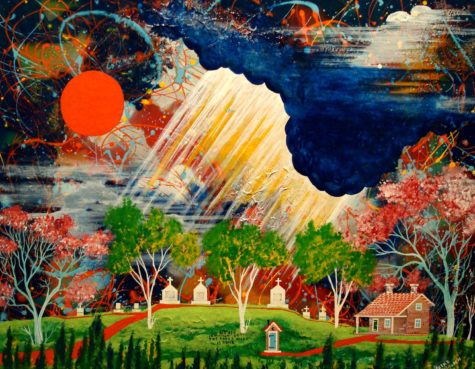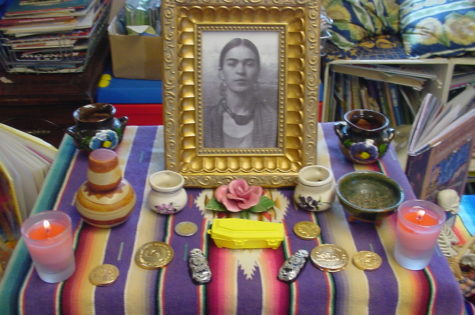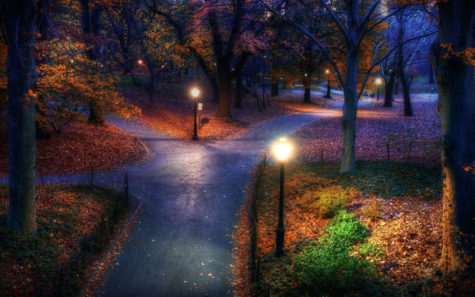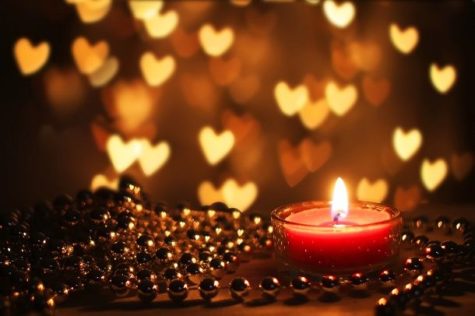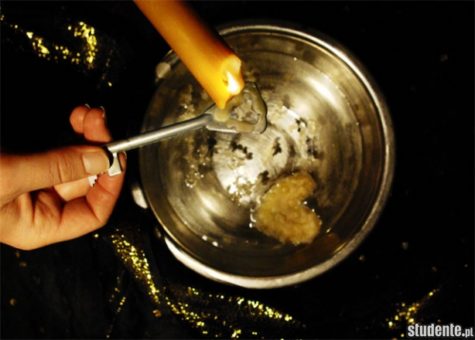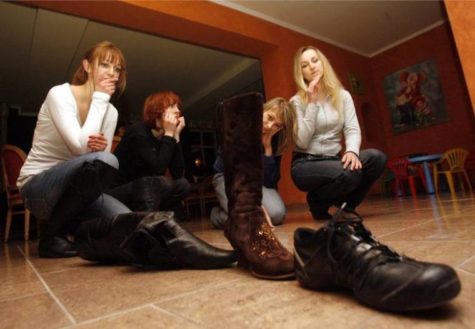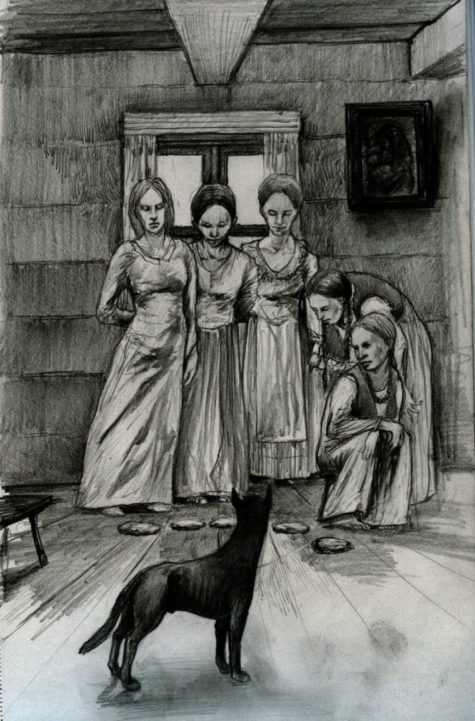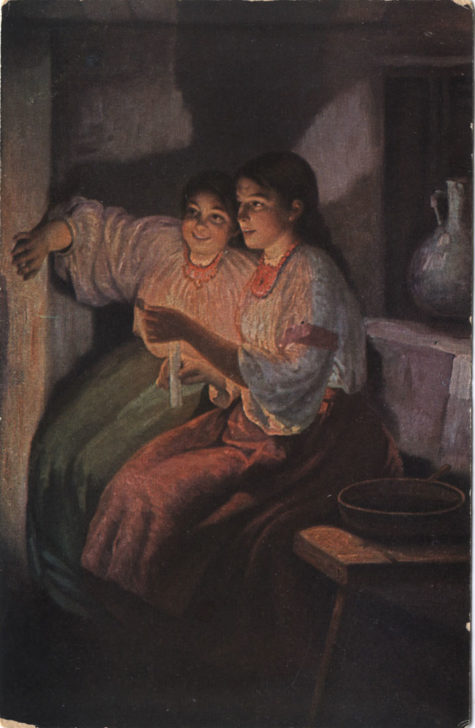Monthly Archives: October 2018
When we consider the month of October and Halloween, our modern take on the Holiday is largely fun and commercially driven, celebrated with spooky costumes and all our favorite Halloween treats. However, this time of year wasn’t always celebrated with ‘trick-or-treating’. Instead, many cultures focus on the celebrations honoring those that came before us.
As we head into the Halloween season, the veil that exists between our world and that of the spiritual will has started to thin out. On Halloween night, also known as All Hallows Eve, it is said that this veil drops, allowing those in the spiritual world to move freely among us. Now, this may sound concerning, to say the least, but don’t get too worried yet. Much like us here on in this life, the spiritual world is filled with both good and not so good spirits. While there are sure to be some mischievous beings trying to bring mischief and chaos into our lives, it is believed that we will also be visited by our deceased loved ones.
The concept of the dead moving among us is the underlying concept behind the Day of the Dead or Dia de los Muertos. Often known as a holiday celebrated in Mexico, records show that these traditions can be dated back as far as the Aztecs. Spanning two days, the holiday specifically focuses on honoring our deceased loved ones, through the use of parties, parades, feasts and other celebrations. Many who celebrate also done colorful costumes and skull makeup, also known as sugar skulls, a symbol that has come to be highly recognizable in today’s pop culture.
All Saints’ Day and All Souls’ Day are also similar to Day of the Dead. These are celebrations embraced by Western Christianity, in which the souls of faithful Christians who have paced are honored with the placing of flowers or candles at their grave sites, and church services discussing their memory. During this time, Christians also pay tribute to the martyrs and saints.
Also known as ‘Summers End’, Samhain is the Pagan holiday celebrated at this time. While this holiday is largely associated with the celebrations of the ancient Celts, many Pagans, Wiccans and Druids will celebrate Samhain around the globe. The holiday marks the end of the harvest season and beginning of winter, however, it also includes a number of celebrations including bonfires and feasts, honoring those that came before them.
Are You Looking For Ways To Honor Your Deceased Loved Ones During This Time? Here Are A Few Ideas:
- Cook a specific meal in honor of your deceased loved one. This is a regular part of the celebrations of Day of the Dead. Those who celebrate would cook the favorite meal of their loved one to ‘share’ in celebration of their time together.
- Use meditation to allow you to open your mind and your heart to communication from your loved ones. Remember, they are moving among you and may very well be trying to let you know that they are there.
- If you do still visit the grave site of a loved one, take some time out this night to be there. Place a lit candle, a flower of your choice or some other memento to show you were there. If you feel their presence, speak aloud to them. Remember, they are moving among us.
- Light a black candle, paying tribute to the stages of life and the inevitable darkness that comes with its final stage, death. Candles are also often used as a tribute or memorial to those who have come before us. If you wish, you can carve the name of your loved one into a taper candle and burn it in honor of a specific loved one.
- Gather friends and family together and light a large bonfire. Share your favorite stories of your friends and loved ones as you feel them moving among you. You can also include their favorite food and drinks in the evening’s celebrations.
- Choose to celebrate life by giving thanks for the life you were given, and that of the family members that came before you. Make a list of all the reasons you have to be appreciative at this time.
- Set up an altar to honor the specific loved ones that hold a special place in your heart. This may include photos or objects that hold a special meaning of some form.
- Take part in an activity that meant something to a friend or loved one that you are choosing to honor. For example, if you recently lost your brother and he was highly into superhero movies, you could enjoy a movie marathon night either on your own or with other loved ones who knew him.
Source: Awareness Act
October 22nd is sacred to all deities of the Crossroads eg Hecate, Legba or Ellegua, Lady Elen, Herne and the Queen of Fairie.
Crossroads have always been seen as magical places. They are places where you have a choice, you can change your destination and take an alternative route. They are places where you might meet strangers or uncanny creatures.
At one time Witches and suicides were buried at crossroads, to confuse their spirits and prevent them haunting. And for the same reason public gallows were often put at a crossroads.
Crossroads are where we can sit and observe magical creatures, the fairies, the Wild Hunt, Witches flying to their meetings. Where spells are more potent and offerings can be left for the gods. And it is the place where we can make a commitment to the Old Path of Witchcraft ourselves.
More about crossroads and magick can be found here: Why Crossroads Are Magickal
Source: Raven Corvus
This is a feast celebrated on the night of 29th/30th November. It’s believed to be a magical night suitable for the love spells, and was celebrated throughout the centuries mostly by the unmarried people who wanted to reveal their future husband or wife.
Similar feasts are also observed for example in some parts of Ukraine, Slovakia, Russia, Germany, Austria and Romania.
A Bit of History
The original name of these celebrations was lost in history. The oldest historical sources confirm that this kind of custom was an old tradition in Poland already around 14th-15th centuries. Information about Polish women who were sentenced to death for conducting wax divinations (described below) can be found in 16th-century documents.
Nowadays the Poles celebrate primarily the Andrzejki (St.Andrew’s Eve), but some remnants of a similar feast of Katarzynki also survived – it was celebrated on the Eve of St. Catherine / Katarzyna (24th/25th Nov), and survived the longest in the region of Biskupin.
It is said that Andrzejki was dedicated primarily to the girls who wanted to know more about their future partner, and Katarzynki was the best for the boys to make divinations.
The Divinations
The most popular form of divination in Poland is pouring hot wax onto cold water. The wax is first melted over fire in a small mug, and then poured through a keyhole. People wait until it hardens properly in the cold water, then the pieces of wax are held against a candle to produce shadow on a wall. Its shapes symbolize things that will happen in the upcoming year.
Instead of a key, in the old days people were using for example woven straw or a horseshoe. People who find it impossible to get a proper key sometimes cut a shape of a key out of hard cardboard. In the past many people used melted lead instead of the wax for the divination.
Other popular divinations include a race of shoes. People gathered in the room take off one of their shoes and everyone places them in one line on the floor. The last shoe in the line is carried to the front – the process is repeated until one of the shoes reaches the front door and crosses the theshold.
Originally it symbolized a girl leaving her home, and owner of the lucky shoe who ‘went out’ (crossed the treshold) first was believed to become the first from the group to get married in the future.
The shoe race can be sometimes manipulated by tilting of the line.
Some old divinations also involve the house pets – cats or dogs. Each person prepares a small bowl with treats – for example milk for a cat or pieces of meat for a dog – and then places it on the floor. Owner of the bowl from which the pet eats first was believed to become the first to get married or find their true love (it depended on the intentions of the divination).
In the old days the treats were prepared very carefully – they were for example small cakes made of certain ingredients, mixed with water that was gathered in a certain way from a well or a brook (brought home for example only in a red mug or only in your own mouth), and baked over fire that was ignited with a wood plank borrowed (or stolen) from a neighbor.
If the pet runs away out of the room with the treat, it was also a good sign meaning a marriage (symbolic crossing of the threshold). However, if the animal hides under a bed with the treat, it meant death of the food’s owner. If the food is only bitten and left in the bowl or close to it, it meant that the partner would break up.
Other popular divination rituals require preparing of pieces of paper with names of the crushes written on it. In one of the versions the paper (preferably in a shape of a heart) is then turned around and pierced with a pin to reveal which of the names is the future spouse. The paper can be also pinned to a wall and serve as a dartboard.
In another version, much older, the people prepare small strips of paper, in a form of lots, and put them under the pillow – they draw one in the morning right after waking up.
Regardless of the version, the papers should always have at least one empty spot / one empty lot in case neither of the chosen names is the destined one.
Before another popular game of divination the people prepare mugs, flipped upside-down, and hide a symbolic accessory under each of them. The mugs are shifted around, and a person (with their eyes covered) chooses one. The hidden accessory indicates the future. It could be for example a ring or a female cap meaning marriage; a twig of rue or a dry leaf meaning spinsterhood / bachelorhood; a rosary, its beads, or a cross meaning a religious life or even life in a monastery; a coin meaning a wealthy life (but not necessarily full of love); a doll meaning an illegitimate child. One mug should be always empty – it means that nothing will change in the nearest future.
Marriage divination has dozens of regional types in Poland, and often take forms of various games or competitions. Many customs are sadly forgotten or not practiced anymore, only being told in stories by the oldest generations.
In the modern days the people treat Andrzejki as a special night that strengthens and ensures effectiveness of various divinations – many of modern activities come also in forms that are known worldwide, for example reading cards or tea leaves. Among most of the modern Polish society the divinations are no longer taken seriously, and are only an occasion for a unique once-in-a-year party, very often combined with celebrations of Andrzej’s namesday.
Source: Lamus Dworski
